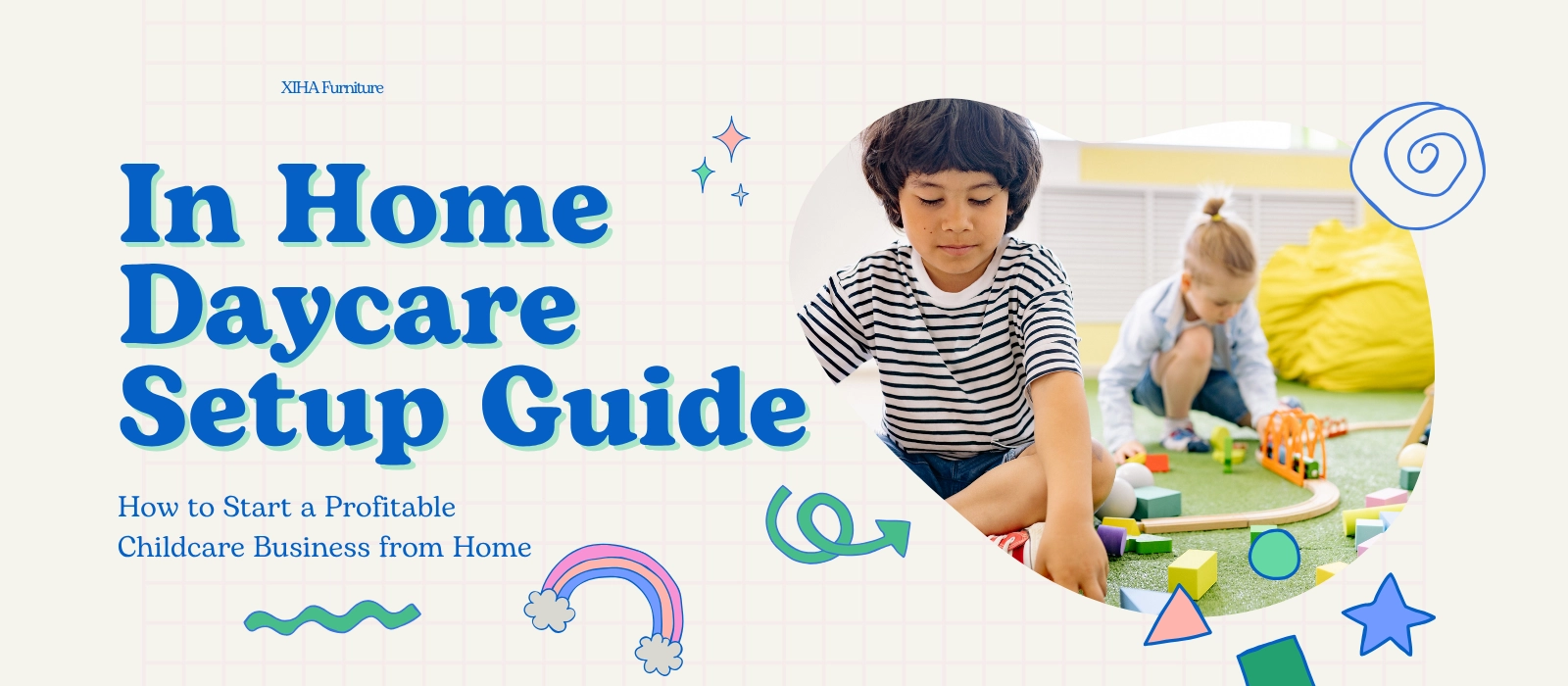Starting an in home daycare setup can feel like a big leap. You might be wondering how to meet legal requirements, choose the right furniture, keep children safe, and make the space both welcoming and educational — all while keeping costs under control. The good news is: it’s not only possible — it’s one of the most flexible, affordable, and rewarding ways to enter the early childhood education industry.
An in home daycare setup allows you to use your own space to create a legally compliant, professionally designed environment that serves both children and their families — without the need for expensive rentals or large teams. With proper planning, the right tools, and quality preschool furniture, you can build a profitable business that supports child development and earns parents’ trust.
Let me show you the exact steps, tools, and proven insights to launch your in-home daycare the smart way.
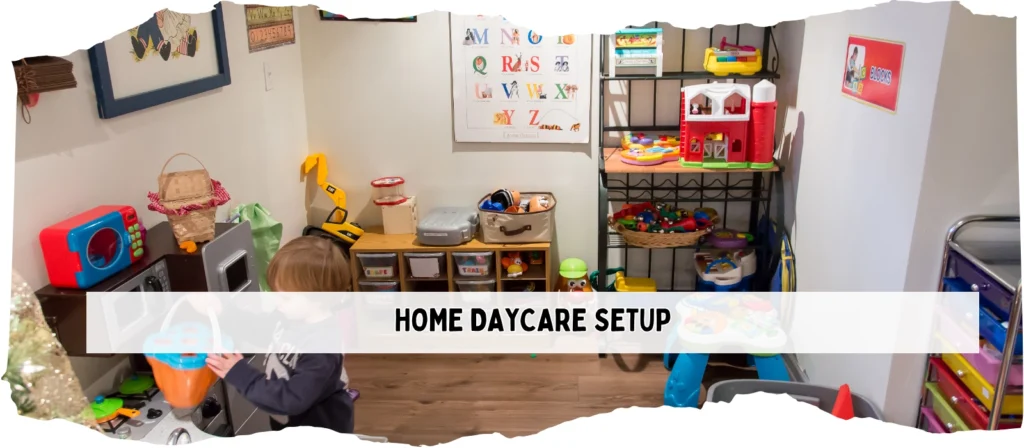
Why More Educators Are Choosing an In Home Daycare Setup
More early childhood educators and entrepreneurs are choosing the in home daycare setup model — and for good reason.
In North America, especially the U.S. and Canada, daycare licensing laws are allowing more flexibility for home-based childcare businesses. Many parents are also seeking more intimate, safer, and community-based environments for their young children. This shift is pushing new providers toward home-based setups, away from high-rent commercial centers.
Compared to traditional daycare centers, setting up a daycare at home involves far lower startup costs. There’s no commercial lease, fewer staff requirements (in the beginning), and customizable learning spaces that can evolve with your program.
Additionally, an in home daycare setup offers:
- Flexible business hours and classroom designs
- Stronger family relationships and loyalty from parents
- Easier scalability when starting with a small group of children
- Higher profit margin when done strategically
If you’re in Canada or the U.S., you’ve likely seen this trend already. But it’s not just a trend — it’s a proven model. According to childcare market reports, the number of licensed home daycares has grown steadily year-over-year in suburban and mid-income neighborhoods.
Many of our clients at XIHA Furniture are owners of small daycare startups who turned their garage, basement, or living area into safe, beautiful preschool spaces — with the right furniture, layout, and educational tools. We’ll show you exactly how they did it.
So where do you start?
Let’s walk through every step of building an in home daycare setup — from licensing to layout, safety to marketing — with helpful links, real examples, and expert advice built for long-term success.

Legal Requirements for In Home Daycare Setup
1. Licensing and Background Checks
Before diving into furniture, layouts, and learning activities, it’s critical to understand the legal framework of your in home daycare setup. This ensures your daycare operates safely and complies with local regulations.
Legal requirements can vary widely depending on your country, state, or province. In the United States and Canada, you will typically need a childcare license issued by your local department of health or education. The licensing process ensures that caregivers meet health, safety, and educational standards. Requirements may include background checks, CPR and First Aid certification, child abuse registry clearance, and a home inspection.
2. Space and Capacity Rules
Space requirements are also important. Most regulations specify the minimum square footage per child — typically around 35 square feet of indoor space and 75 square feet of outdoor space per child. This affects how many children you are legally allowed to care for at any given time. In some regions, you may operate legally as an unlicensed provider if you care for a limited number of children (e.g., fewer than 5), but this varies.
3. Insurance Coverage and Risk Management
Insurance is another consideration. You should have general liability insurance specific to daycare services, which protects both you and the children in your care. In some areas, insurance may even be a licensing requirement.
4. Zoning and Local Authority Regulations
It’s also essential to check zoning laws and homeowners’ association rules, if applicable. Some residential areas may have restrictions on home-based businesses. It’s worth visiting your local child care licensing office’s website or contacting them directly. Here’s a helpful U.S. resource: Child Care Licensing Regulations by State.
5. Provincial Variations in Canada
In Canada, the rules differ by province. For instance, in Ontario, licensed home child care agencies oversee individual providers, while in British Columbia, you must register your home daycare and follow specific staff-to-child ratios. For more info, visit Canada’s official early learning portal.
Taking the time to understand the legal steps of your in home daycare setup gives you confidence and prevents costly compliance mistakes later. Once these basics are handled, you can move on to the fun part: designing your space.
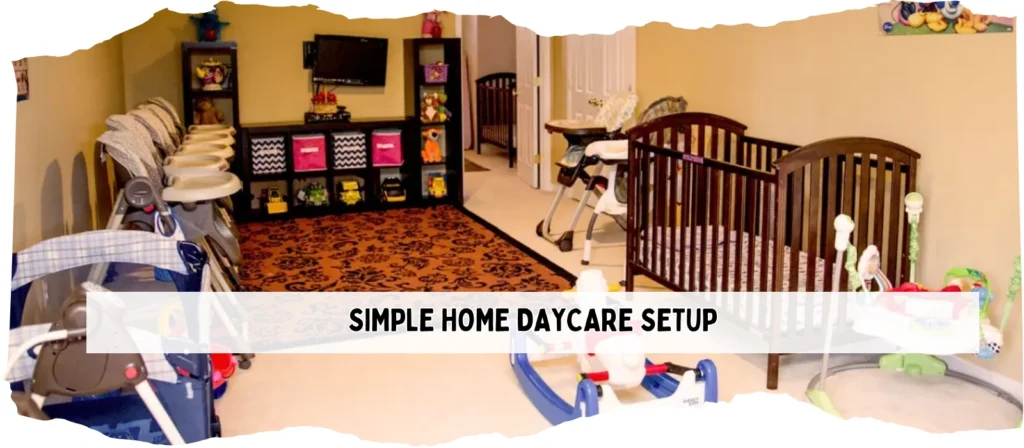
How to Design the Perfect In Home Daycare Space
Creating a functional and engaging environment is one of the most important parts of your in home daycare setup. Children thrive in spaces that are both safe and stimulating, and parents feel more confident when the setting looks organized, professional, and child-centered.
Start by identifying zones within your available space. Even if you’re working with just one large room, dividing areas for specific activities can dramatically increase both safety and learning efficiency.
1. Key Zones to Include:
- Reading corner with soft seating and accessible bookshelves
- Art and craft area with washable tables and storage for supplies
- Free play zone with open space and age-appropriate toys
- Snack and meal area with easy-to-clean surfaces
- Nap space with foldable cots or mats
- Wash and hygiene zone with child-safe access
A well-planned space helps with classroom management and promotes independent learning. Furniture should be arranged to allow clear sightlines, minimizing blind spots and hazards. Ensure all materials are within reach for children, but out of reach if not age-appropriate.
2. Safety and Accessibility Design
Use furniture with rounded edges, anti-slip mats, and child-size dimensions. Safety gates, outlet covers, corner guards, and wall anchors for shelves are must-haves. Flooring should be soft yet easy to clean — such as vinyl or foam tiles. Walkways should be wide enough to prevent crowding and allow emergency evacuation if needed.
Accessibility is equally important. Ensure that children with mobility challenges can navigate the space freely. Consider having multi-sensory areas for children with different learning needs.
3. Using Furniture to Structure the Space
Modular preschool furniture helps divide areas naturally while keeping the room visually open. For example, using low bookshelves to section off the reading area, or placing art easels to form a creative boundary. Furniture should be multi-functional where possible — storage benches, convertible tables, or foldable nap cots save space and cost.
At XIHA Furniture, we design and manufacture space-saving preschool furniture tailored to in home daycare setups. Many of our clients use our child-safe storage cabinets and lightweight tables to configure flexible learning zones that can change as needed. Our furniture lines are tested for safety and certified for export to North America and Europe.
With the right furniture and layout, your home daycare will not only meet compliance and safety standards, but also feel like a professionally designed learning space that supports curiosity, comfort, and creativity.
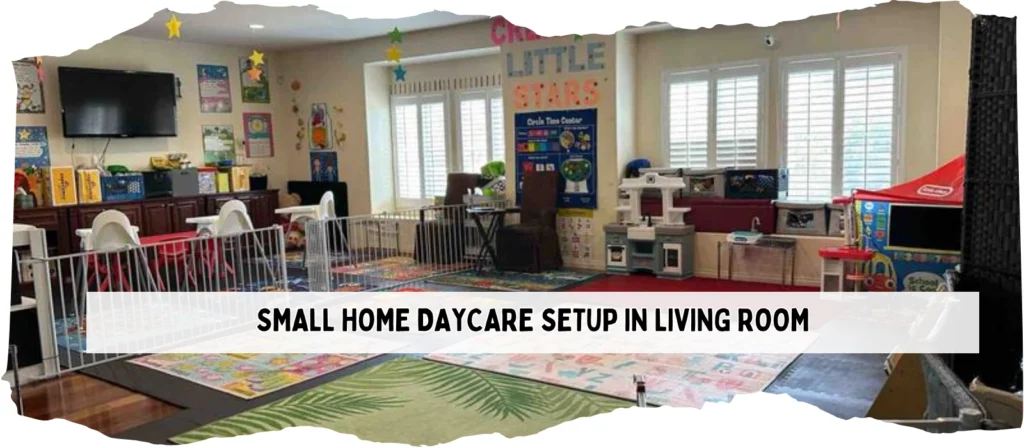
Must-Have Preschool Furniture for Your In Home Daycare Setup
Choosing the right furniture is one of the most important decisions you’ll make during your in home daycare setup. It affects how children interact with the space, how easy it is to supervise, and how smoothly your daily operations run.
1. Tables and Chairs
Select child-sized tables and chairs that are ergonomic, stable, and easy to clean. Rounded corners, lightweight yet sturdy materials, and stackable design are features to prioritize. Adjustable-height legs offer flexibility as children grow.
Consider having a variety of table sizes to accommodate different activities — large rectangular tables for group work, smaller round tables for crafts or snack time. Always choose materials that are scratch-resistant and moisture-resistant.
2. Storage Solutions
Organized storage is key to a safe and efficient environment. Open shelving units allow children to access materials independently, promoting autonomy. Wall-mounted storage helps free up floor space.
Use labeled bins, clear containers, and color-coded sections to keep items tidy and easy to find. Lockable cabinets are important for storing hazardous items or supplies that should be adult-access only.
3. Nap and Soft Zones
For rest time, foldable nap cots or padded mats are the most space-efficient options. These should be easy to sanitize and store compactly when not in use.
You can also create a soft area using foam tiles, plush rugs, or cushioned seating. This becomes a calming space for reading or quiet play, essential in any early childhood setting.
4. Specialty Furniture
Items like art easels, sensory tables, dramatic play centers, and puppet theaters can enrich the learning environment. These pieces should be durable, safe, and easy to rotate based on your curriculum.
Look for multifunctional designs — for example, a sensory table that doubles as a light table, or an easel that flips for whiteboard use.
5. Safety-Certified Products
Always confirm that any preschool furniture you purchase meets safety standards such as ASTM, EN71, or equivalent certifications in your country. Check for materials that are non-toxic, lead-free, and environmentally compliant.
At XIHA Furniture, all our preschool collections are certified and tested for quality, impact resistance, and child safety. We offer bulk ordering, customizable designs, and reliable shipping options tailored for in home daycare needs.
With the right furniture foundation, your in home daycare setup becomes a space that nurtures growth, exploration, and joyful learning every day.
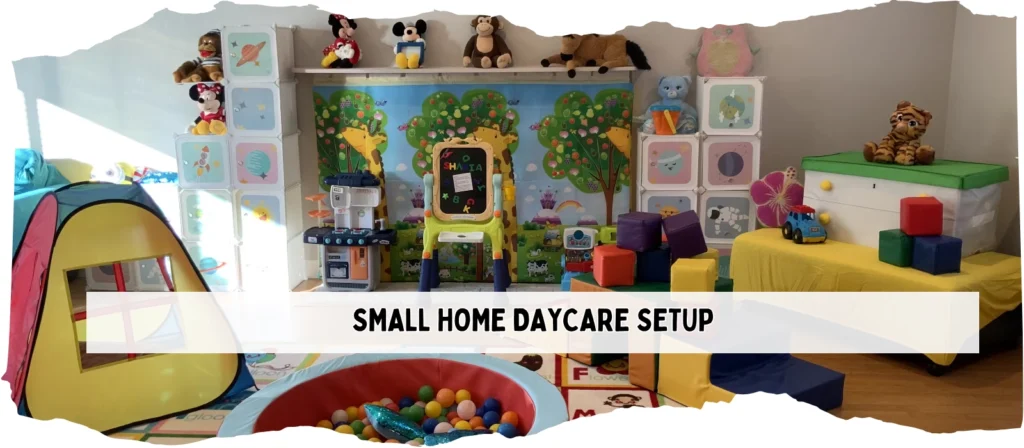
Choosing Educational Toys and Learning Materials
No in home daycare setup is complete without a thoughtful selection of toys and learning materials. These resources play a critical role in childhood development, fostering creativity, motor skills, and social-emotional learning. For any in home daycare setup, the quality and appropriateness of your materials can deeply influence both parent perception and child outcomes.
1. Age-Appropriate and Safe Toys
Start with safety. Every toy in your in home daycare setup should be non-toxic, choke-safe, and made from durable materials. Prioritize toys certified under safety standards like ASTM F963 or EN71. Avoid items with small detachable parts for toddlers and infants.
Consider age when curating your toy selection. Infants benefit from sensory toys, mirrors, and soft rattles, while toddlers love stackers, shape sorters, and ride-on toys. Preschoolers thrive on building blocks, pretend play sets, and puzzles. A mixed-age group requires clearly labeled storage and rotating bins to manage access based on developmental stages.
2. Educational and Open-Ended Materials
In a strong in home daycare setup, toys are not just for entertainment — they are tools for learning. Focus on open-ended items that spark curiosity and creativity: wooden blocks, magnetic tiles, play kitchens, loose parts, and puppets. These materials support multiple areas of development, including problem-solving and communication.
Introduce Montessori-inspired items and Reggio Emilia materials that support self-directed discovery. Learning tools like number rods, sandpaper letters, or sorting trays help children understand abstract concepts through tactile experience.
3. Literacy and Language Tools
An effective in home daycare setup includes a literacy corner. Stock it with age-appropriate books, felt boards, alphabet games, and audio story devices. Reading aloud is one of the most important parts of early childhood education. Include diverse titles, visual supports, and books with predictable text and rhyming structures.
Encourage storytelling with props like puppets, story stones, or sequencing cards. These tools build vocabulary, listening skills, and narrative understanding.
4. STEM and Sensory Play Resources
STEM toys — science, technology, engineering, and math — should be part of any well-rounded in home daycare setup. These include ramps and balls, magnets, magnifying glasses, basic coding games, and pattern blocks. Such tools encourage experimentation and cause-effect thinking.
Sensory materials like kinetic sand, water tables, textured balls, and playdough trays offer tactile input that’s calming and developmentally beneficial. Use sensory bins to create rotating seasonal or theme-based activities.
5. Organizing and Rotating Toys
Too many toys at once can lead to clutter and overstimulation. Use your in home daycare setup to create toy rotation systems — store excess toys in labeled containers and refresh weekly. This maintains novelty and keeps the environment clean.
Clearly defined toy zones also teach children responsibility and order. Use shelf dividers, tray systems, and visual labels so children can return items independently.
At XIHA Furniture, we supply not just preschool furniture but also toy storage systems designed for the needs of in home daycare setups. Our low-shelf storage units, rolling bins, and cubbies make it easy for educators to manage rotating materials efficiently.
With the right toys and materials, your in home daycare setup becomes an active learning lab — a place where children can explore freely, engage deeply, and grow confidently.
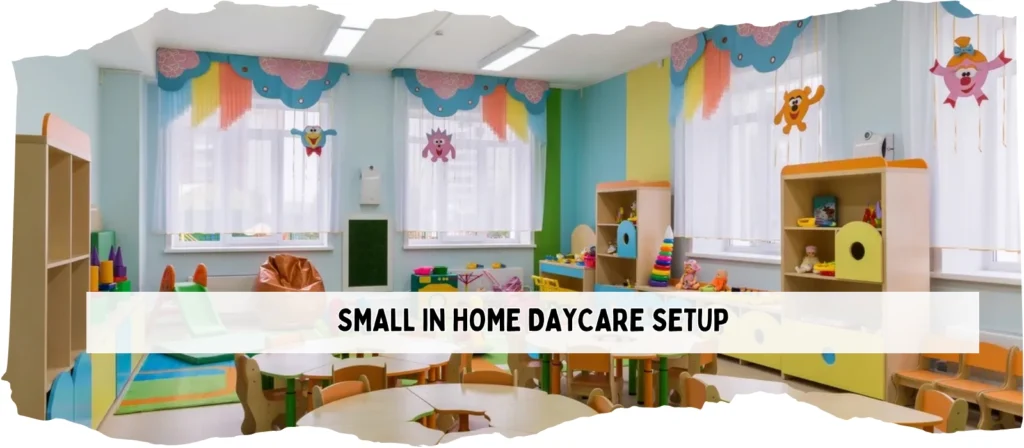
Budget Planning: What Does an In Home Daycare Setup Really Cost?
A successful in home daycare setup begins with smart, realistic budgeting. Before purchasing supplies or starting renovations, you’ll want to understand the full financial picture — from initial investments to recurring monthly costs.
1. Startup Costs Breakdown
The upfront costs for an in home daycare setup vary based on your space, scale, and local licensing rules. On average, a small-to-mid size setup can cost between $3,000 and $10,000 depending on how much you already own and where you source your furniture and supplies.
Key startup expenses include:
- Licensing and inspections: Fees for registration, background checks, fire/safety evaluations
- Furniture: Child-sized tables and chairs, nap cots, storage units, safety gates, changing tables
- Learning materials and toys: Educational toys, books, art supplies, manipulative tools
- Safety upgrades: Fire extinguishers, outlet covers, corner guards, door locks
- Minor renovations: Painting, child-proofing, layout optimization, flooring
- Marketing materials: Website, brochures, signage for neighborhood visibility
If you order furniture in bulk directly from trusted suppliers like XIHA Furniture, you can significantly reduce total costs. Many local buyers overpay by 30–60% compared to importing from certified Chinese manufacturers.
2. Monthly Operating Expenses
Once your in home daycare setup is launched, your monthly costs will typically include:
- Utilities: water, electricity, heating/cooling
- Consumables: snacks, cleaning supplies, diapers (if provided)
- Staff wages: if you hire assistants
- Maintenance: minor repairs, replacement of worn-out materials
- Insurance and tax obligations
A lean home daycare with 6–8 kids can usually operate on $800–$1,500/month depending on how many services you include (meals, diapers, extended hours, etc.).
3. How to Save Without Sacrificing Quality
You don’t need to buy everything at once. Start with essential furniture, safety upgrades, and a small selection of toys. Gradually build your resource library based on the interests and ages of the children you enroll.
Ordering through wholesale B2B platforms or attending educational supply trade shows (like the Canton Fair or Early Childhood Expo) can help reduce costs. Bulk ordering from a single supplier also cuts shipping and customs expenses.
4. ROI: When Will You Break Even?
With proper planning, most in home daycare setups recover their initial investment within 6 to 12 months. For example, if you enroll 6 children at $800/month, that’s $4,800 in revenue. Subtracting $1,200 in average monthly operating costs leaves $3,600 profit — meaning your $6,000 startup cost is covered in under two months.
Of course, pricing will depend on your area, service hours, and what extras (like meals or tutoring) you offer. Still, this model remains one of the most profitable and flexible options for early childhood professionals.
At XIHA Furniture, we’ve helped hundreds of educators around the world lower their setup costs through customized bulk packages. Let us know your classroom size, and we’ll offer a one-stop furniture quote tailored for your in home daycare setup.
Sample Budget Summary for an In Home Daycare Setup
| Expense Category | Estimated Cost Range |
|---|---|
| Licensing & Inspections | $200 – $1,000 |
| Furniture | $1,200 – $3,500 |
| Toys & Learning Materials | $500 – $1,500 |
| Safety Upgrades | $300 – $800 |
| Renovations & Setup | $400 – $2,000 |
| Marketing Materials | $200 – $700 |
| Total Startup Cost | $3,000 – $10,000 |
| Monthly Operating Costs | $800 – $1,500/month |
| Break-Even Timeline | 2–6 months (average) |
Marketing and Filling Your In Home Daycare
Once your in home daycare setup is complete, the next step is getting the word out. A great space means nothing without enrolled children. Marketing your services effectively will help you build trust, attract families, and establish a consistent enrollment base.
1. Build a Strong Brand and Message
Begin by creating a name, logo, and slogan that reflect your daycare’s philosophy. Even for a small in home daycare setup, branding adds professionalism and credibility. Highlight your unique features: small group sizes, custom-designed spaces, safe furniture, or special programs.
Clearly define what you offer — full-day care, part-time options, age range, enrichment activities — and how it benefits parents. Showcase your qualifications and safety compliance as part of your brand message.
2. Create an Online Presence
A simple website goes a long way. Include your mission, images of your in home daycare setup, safety certifications, parent testimonials, enrollment process, and contact information. Don’t forget SEO — include your city and service type so parents can find you easily.
Set up Google Business and make sure your daycare appears on Maps. Positive reviews from families go a long way.
Social media also helps — platforms like Facebook and Instagram allow you to show off your learning space, activities, and special moments. Regular updates build trust and familiarity with prospective parents.
3. Local Marketing Tactics
Distribute flyers and posters at community centers, libraries, churches, pediatric offices, and grocery stores. Host open house events where parents can visit your in home daycare setup and meet you in person. Consider offering a referral discount for parents who bring in new families.
Networking with local parenting groups or online forums can also help. Many parents rely on word-of-mouth recommendations from trusted sources.
4. Build a Waitlist and Manage Demand
As your in home daycare setup becomes known, you may face more interest than you can accommodate. That’s a good problem to have. Create a structured waitlist with estimated enrollment dates and periodic updates.
Use this demand to plan future growth — whether that’s expanding your licensed capacity, hiring an assistant, or starting a second location.
At XIHA Furniture, many of our clients use high-quality, photo-ready furniture layouts to impress prospective families during tours and social media campaigns. The right furniture isn’t just functional — it’s part of your marketing advantage in an in home daycare setup.
Safety Standards in Your In Home Daycare Setup
Safety is at the heart of every successful in home daycare setup. Parents want to know their children are in a secure and hazard-free environment. As a provider, ensuring compliance with safety standards not only builds trust but also protects your business.
1. Physical Safety Measures
Start with the basics: outlet covers, safety gates, corner guards, and cabinet locks. Every room in your in home daycare setup should be child-proofed and regularly inspected. Furniture should be anchored to walls, especially bookshelves and tall storage units.
Use non-slip mats in wet areas and soft flooring in play zones to reduce injury risk. Windows should have secure locks, and cleaning supplies must be stored out of children’s reach. Maintain visible emergency exit paths, fire extinguishers, and a first aid kit.
2. Furniture and Equipment Safety
All furniture in your in home daycare setup must meet local and international child safety standards, such as ASTM or EN71. Avoid sharp edges, unstable items, or poorly finished surfaces. Nap cots, high chairs, and changing tables must have appropriate safety features like rails, buckles, and height limits.
At XIHA Furniture, our products are lab-tested to meet safety certifications in North America, Europe, and Australia. Our child-safe coatings, rounded corners, and anti-tip designs are trusted by daycare owners worldwide.
3. Health and Hygiene Protocols
Your daycare must maintain strict cleanliness standards. Toys should be disinfected regularly. Bedding should be washed weekly or more often as needed. Diapering and toileting areas must be cleaned and sanitized after each use.
Handwashing stations should be accessible and child-friendly. Post clear routines for staff and children around hygiene — including daily health checks, proper disposal of waste, and food safety procedures.
4. Supervision and Emergency Planning
Children should never be left unattended. Organize your in home daycare setup so that caregivers can supervise all areas easily. Maintain proper child-to-adult ratios at all times.
Prepare an emergency action plan covering fire, injury, severe weather, and intruder scenarios. Post emergency numbers clearly and conduct practice drills regularly. Consider CPR and first-aid training for all staff.
By following safety best practices, your in home daycare setup becomes not only compliant but also trustworthy — something that parents will notice immediately during a tour. It’s not just about avoiding accidents; it’s about creating a space that supports every child’s physical and emotional wellbeing.
Success Stories: Real-Life In Home Daycare Owners
Sometimes the best way to understand the power of a well-designed in home daycare setup is to see how others have done it. Here are stories from real daycare owners who turned ordinary home spaces into extraordinary environments for children — all while keeping budgets under control and using trusted suppliers like XIHA Furniture.
1. Emily’s Bilingual Montessori Home (Toronto, Canada)
Emily is a certified early childhood educator who launched her bilingual Montessori-inspired daycare from the basement of her townhouse in suburban Toronto. She used simple zoning techniques and affordable furniture imported through XIHA to separate her space into a calm reading nook, a manipulatives shelf, and a small-group table.
With just 500 square feet, she now runs a full-day program for 6 children aged 2–4. Thanks to the ergonomic seating and tidy cubbies she installed, her setup earned praise from local inspectors and word-of-mouth spread quickly. Her waitlist grew to 12 families in under three months.
2. Malik’s Nature-Themed Setup (Portland, Oregon)
Malik, a former forest school volunteer, wanted to blend outdoor exploration with indoor safety. His in home daycare setup includes both a backyard nature trail and a cozy interior filled with neutral-toned, eco-friendly furniture.
He ordered child-sized wooden shelves, washable nap mats, and plant-themed reading rugs from XIHA Furniture, saving nearly 45% compared to U.S.-based vendors. His Instagram account showcases daily nature-themed projects, which helped him grow a loyal following and fill his program within two months of opening.
3. Ana’s Multicultural Home Daycare (Austin, Texas)
Ana, originally from Brazil, integrates language immersion and cultural storytelling into her daily curriculum. Her small playroom is filled with vibrant posters, ethnic puppets, and regionally diverse toys. To make her layout child-friendly and clutter-free, she purchased custom low-shelf storage and soft-area mats from XIHA.
Parents especially loved how the daycare reflected global learning values and safe design. Ana has now expanded to include a part-time assistant and is looking to open a second location next year.
Each of these in home daycare setup stories proves that great results don’t require large spaces or giant budgets. What they do require is vision, planning, and the right furniture partner.
At XIHA Furniture, we work closely with new daycare owners worldwide, helping them turn homes into educational sanctuaries that meet international standards for safety, function, and warmth.
Why XIHA Furniture is Your Best Partner for In Home Daycare Setup
Choosing the right supplier is just as critical as choosing the right design. At XIHA Furniture, we specialize in helping daycare providers around the world create functional, affordable, and certified in home daycare setups. Whether you are just starting out or scaling your business, our products and services are tailored to meet your needs.
1. Full-Service Solutions for Educators
We offer a complete solution — from layout design consultation and product recommendations to manufacturing, bulk pricing, international logistics, and after-sales support. You get everything in one place, saving you time, money, and headaches.
We know that an in home daycare setup requires thoughtful furniture that supports both learning and safety. That’s why our catalog includes stackable chairs, foldable nap cots, book displays, sensory tables, and multi-functional storage — all tested to international standards.
2. Export-Ready, Certified Furniture
Our factory operates five production lines and exports to North America, Europe, and Australia. Every product is safety-certified (ASTM, EN71, etc.) and can be shipped with full documentation for customs clearance.
We’re a direct manufacturer — no middlemen, no price markups — which allows us to offer unbeatable value for B2B clients building or expanding their in home daycare setups.
3. Customizable Designs and Bulk Discounts
Need a specific dimension, color, or feature? We accommodate OEM/ODM requests for preschools, kindergartens, and early education centers. With MOQ-friendly pricing, even small startups can benefit from professional-quality furniture tailored to their layout and curriculum.
We also provide free visual layout plans on request, helping you visualize how your space will look with XIHA Furniture installed.
4. Trusted by Global Daycare Startups
From Canada to Australia, our clients rely on us to deliver quality, affordable furniture that supports child development and business success. Many start with one classroom and return to furnish multiple branches as they grow.
When you’re planning your in home daycare setup, choosing XIHA Furniture means you’re not just buying furniture — you’re gaining a long-term partner committed to your success.
Conclusion
Starting an in home daycare setup is one of the most rewarding paths for early childhood educators and entrepreneurs alike. With the right planning, quality furniture, and strong partnerships, you can create a safe, enriching, and profitable learning environment inside your own home. XIHA Furniture is proud to be part of that journey — supporting your vision with certified products, tailored solutions, and dependable service.

